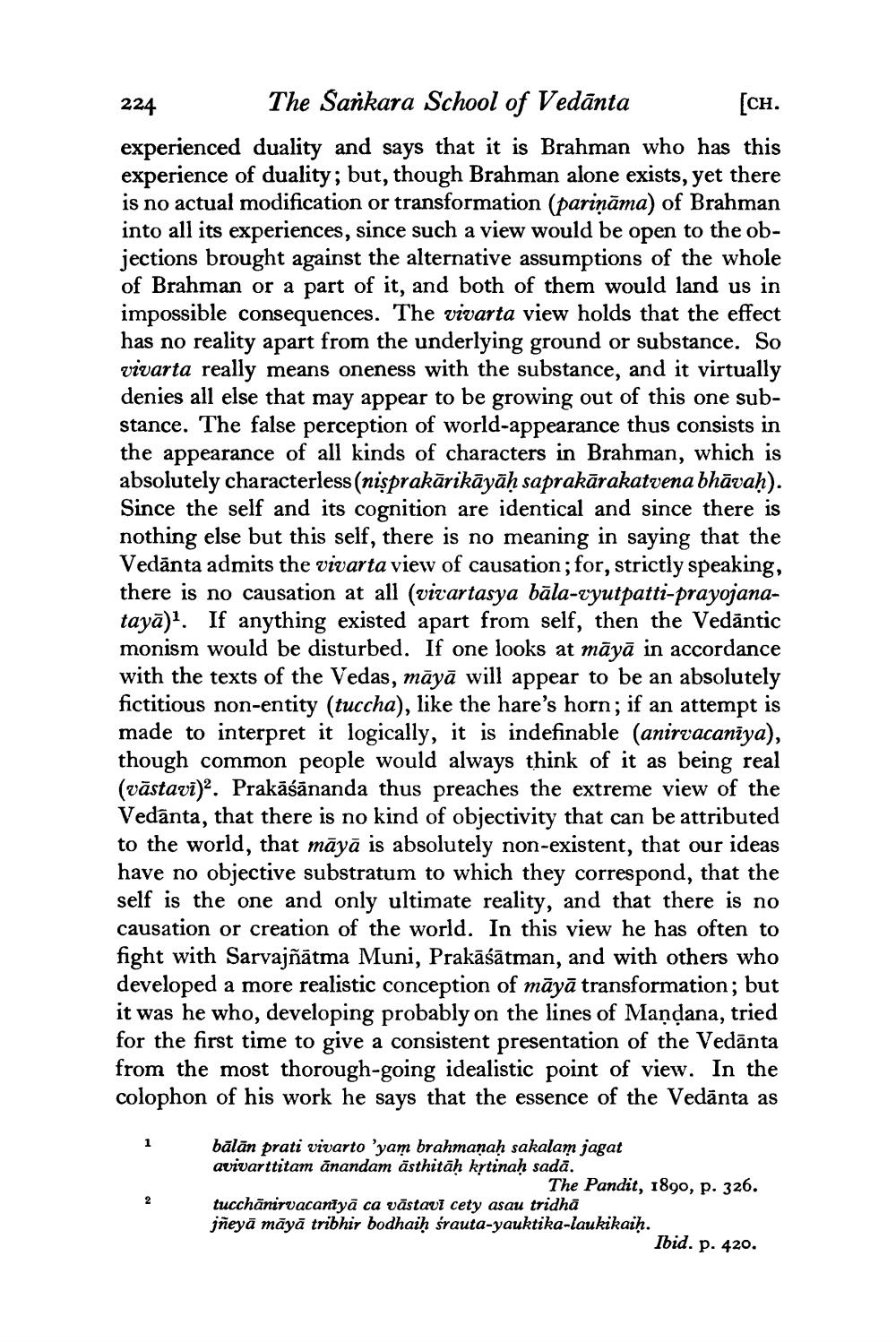________________
The Sankara School of Vedanta
[CH.
experienced duality and says that it is Brahman who has this experience of duality; but, though Brahman alone exists, yet there is no actual modification or transformation (pariņāma) of Brahman into all its experiences, since such a view would be open to the objections brought against the alternative assumptions of the whole of Brahman or a part of it, and both of them would land us in impossible consequences. The vivarta view holds that the effect has no reality apart from the underlying ground or substance. So vivarta really means oneness with the substance, and it virtually denies all else that may appear to be growing out of this one substance. The false perception of world-appearance thus consists in the appearance of all kinds of characters in Brahman, which is absolutely characterless (nisprakārikāyāḥ saprakārakatvena bhāvaḥ). Since the self and its cognition are identical and since there is nothing else but this self, there is no meaning in saying that the Vedanta admits the vivarta view of causation; for, strictly speaking, there is no causation at all (vivartasya bala-vyutpatti-prayojanataya)1. If anything existed apart from self, then the Vedantic monism would be disturbed. If one looks at māyā in accordance with the texts of the Vedas, māyā will appear to be an absolutely fictitious non-entity (tuccha), like the hare's horn; if an attempt is made to interpret it logically, it is indefinable (anirvacaniya), though common people would always think of it as being real (vāstavi)2. Prakāśānanda thus preaches the extreme view of the Vedanta, that there is no kind of objectivity that can be attributed to the world, that māyā is absolutely non-existent, that our ideas have no objective substratum to which they correspond, that the self is the one and only ultimate reality, and that there is no causation or creation of the world. In this view he has often to fight with Sarvajñātma Muni, Prakāśātman, and with others who developed a more realistic conception of māyā transformation; but it was he who, developing probably on the lines of Mandana, tried for the first time to give a consistent presentation of the Vedanta from the most thorough-going idealistic point of view. In the colophon of his work he says that the essence of the Vedanta as
224
1
2
bālān prati vivarto 'yam brahmaṇaḥ sakalam jagat avivarttitam anandam ästhitaḥ kṛtinaḥ sadā.
The Pandit, 1890, p. 326.
tucchānirvacaniyā ca vāstavī cety asau tridha jñeyā māyā tribhir bodhaiḥ śrauta-yauktika-laukikaiḥ.
Ibid. p. 420.




